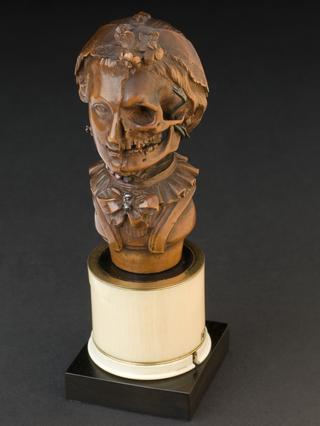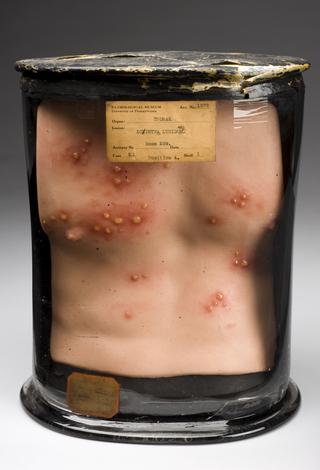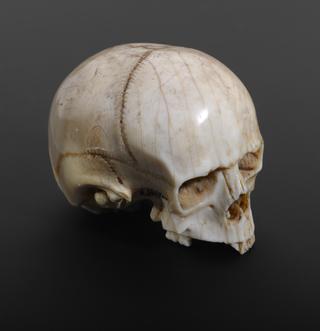



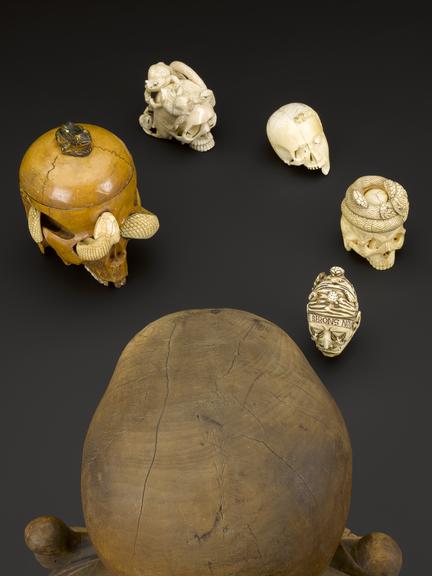
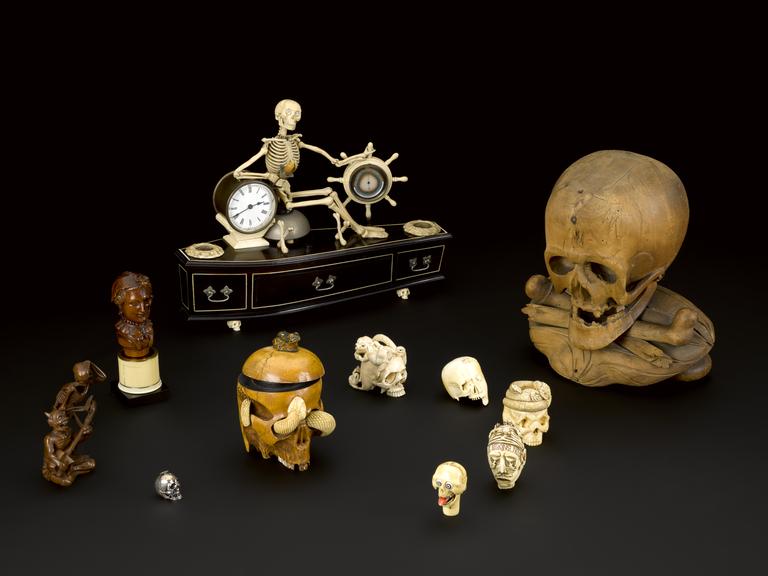

Memento mori skull, wood, with crossbones, (probably) European, 19th century
Memento mori figures were used to remember the dead and remind the living of the fragility of life. In this example, a skull sits on top of crossed bones. This is the traditional symbol of piracy, but the skull and crossbones had other meanings. It suggested the ultimate triumph of death over life, for example Shakespeare’s famous scene in which Hamlet holds the skull of Yoric. Memento mori often incorporate other objects which illustrate the same theme, such as sand timers and candles.
Details
- Category:
- Anatomy & Pathology
- Collection:
- Sir Henry Wellcome's Museum Collection
- Object Number:
- A99556
- Materials:
- wood
- Measurements:
-
overall: 260 mm x 233 mm x 175 mm, 1.873 kg
- type:
- memento mori
- credit:
- Hirsbrunner
